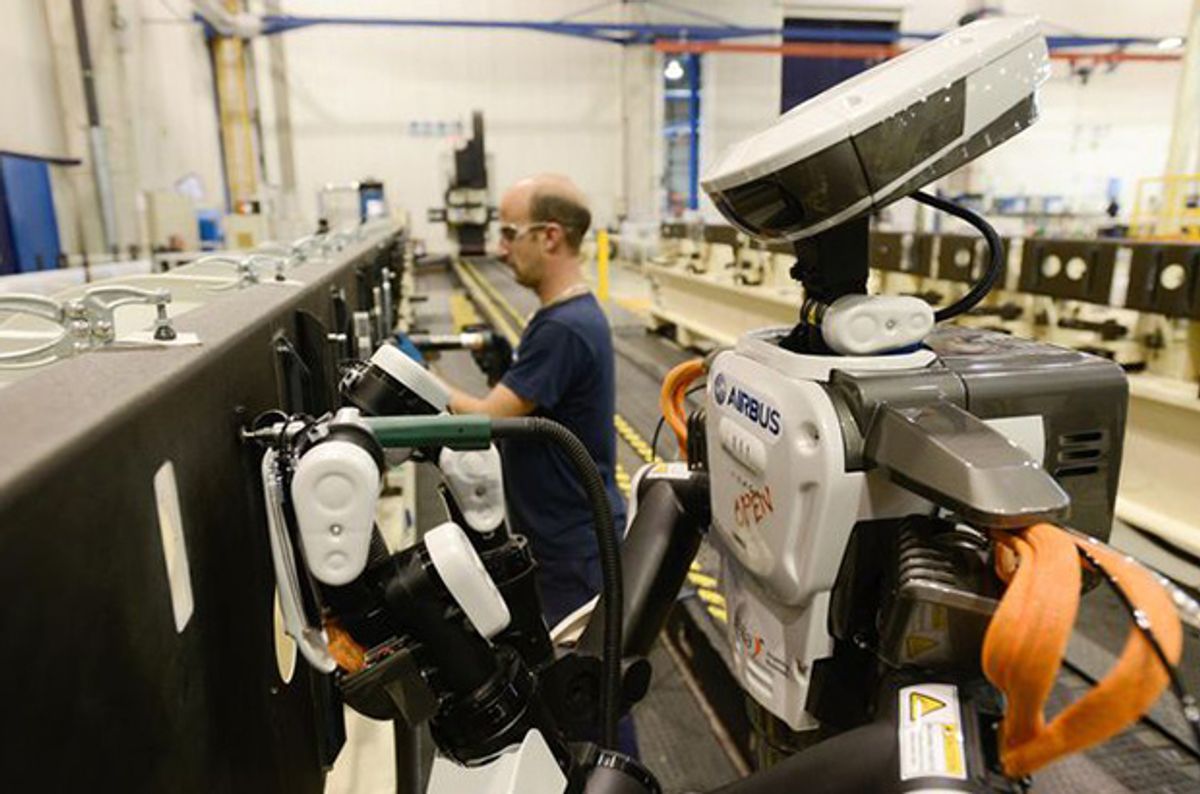Hopefully, you’ve had some time off from robots over the last week or two. It’s been nice, hasn’t it? But your robot misses you, and it’s time to get back to work. And for 2016, how about you start training your robot to do something useful for a change, like transferring items from shelves to totes or drilling holes in airplanes. Both Amazon and Airbus have announced challenges for 2016. If your robot is talented enough, you could win a bunch of money, but more importantly, you could end up with serious attention from an enormous company that wants to do stuff with your robot.
2016 Amazon Picking Challenge at RoboCup
Last year, Amazon held a challenge at ICRA for robots that could pick a subset of objects from inventory shelves and place them on a table without first crushing them into dust. It went pretty well:
For 2016, Amazon is stepping the challenge up and moving it over to RoboCup, which will be held in Leipzig, Germany, in June. Last year, teams had to pull specific objects out of a shelf and place them in a container. This year, there’s another task:
- First, the robots will be presented with a stationary inventory shelf and be asked to transfer a subset of the products from the shelf to a tote.
- Second, the robots need to pull items out of an unstructured tote and store them successfully to a shelf between other items.
The more items your robot can successfully transfer within the time limits, the higher your score, and Amazon has up to US $80,000 in prizes for teams with the best skills. Teams can apply for grant funding to get themselves and their robots to Germany. All the details are still being planned out, but that doesn’t meant that you can’t get started: the essential components of object recognition, pose estimation, grasp planning, compliant manipulation, motion planning, task planning, task execution, error detection, and recovery are common to both the 2015 challenge and pretty much every other manipulation task that robots do, ever.
[ Amazon Picking Challenge ]
2016 Airbus Shopfloor Challenge at ICRA
Airbus has a backlog of 7,000 aircraft on order. They’re really far behind, in other words, and there are a variety of constraints that prevent robots from working efficiently on airplanes, meaning that Airbus has to have humans doing a bunch of the repetitive and boring work. Ugh. If Airbus had its way, robots would be doing much of the hole drilling required for aircraft construction, and I guess you have to do a lot (like, seriously, a lot) of hole drilling when you’re constructing an aircraft.
Building airplanes from scratch is complicated and difficult. Building robots from scratch is also complicated and difficult, so it’s understandable that Airbus doesn’t want to take on both of those things at the same time. And they’d have to, because the kinds of robots that Airbus could buy wouldn’t be able to do the things that Airbus wants them to do:
The robots currently able to perform point-based tasks at accuracy demanded by Airbus processes have a bad weight/payload ratio in order to be able to resist the loads generated by the operation. These already heavy machines use end effectors capable of multiple operations which further increase their weight. Such solutions have limited application in aircraft assembly, as they cause a multitude of problems and constraints at the industrialization phase. They require dedicated plant infrastructure, generate vibrations and other disturbances, and cannot co-operate safely with workers. There are further limitations regarding aircraft accessibility and high costs.
Airbus is holding a competition at ICRA 2016 where they’re hoping that teams will demonstrate small (sub-100 kg) robotic systems with modular arms that are able to accurately drill several hundred holes in a flat aluminum panel in under 60 minutes. The robots will have to be completely autonomous (no data transmission or remote control will be permitted), and the all algorithms must use an open source system as the main driver. Airbus doesn’t care whether you use one robot arm or several at once, although they’d prefer smaller, lower cost systems.
During the competition itself, teams will earn points based on the number of holes drilled and how accurate they are, along with a whole bunch of bonus points if their systems are able to drill “constrained” holes that are harder to reach. A score of 700 points will put you in contention for a 20,000 euro prize, and if you send Airbus an impressive video by mid-March, there’s a chance that they’ll give you support (including funding for equipment, airfare, and accommodations) for your team to attend ICRA in Stockholm.
Evan Ackerman is a senior editor at IEEE Spectrum. Since 2007, he has written over 6,000 articles on robotics and technology. He has a degree in Martian geology and is excellent at playing bagpipes.




